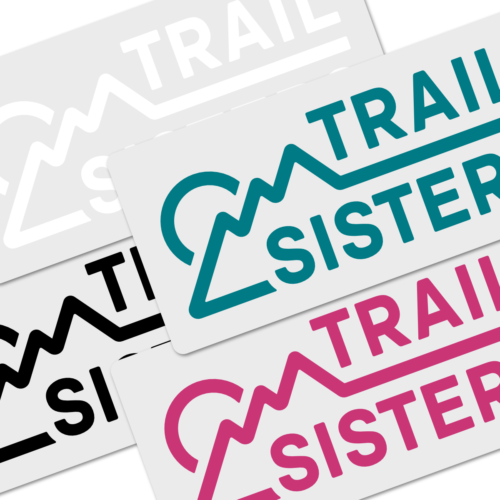Main Menu
Nutrition for Menstruating Athletes

Madeline is an ultra runner and registered dietitian living in Northern Virginia. She loves being in the mountains with her family, and spends most of her free time hiking and trail running in Great Falls or Shenandoah National Park.
Share This Article!


By: Madeline Radigan
Anyone who experiences menstruation is familiar with their monthly period – typically anywhere from 4-7 days of bleeding, plus the wide variety of added symptoms that accompany it. What many people aren’t as familiar with is the cycle that surrounds those monthly periods; the cycle that involves hormonal ups and downs, changing on a daily basis between our periods, and affecting our bodies on just as significant a level as the event itself. Many women end up dreading this monthly cycle, feeling like they have no control over its effects on training, performance, or life in general. When we learn how our bodies change and fluctuate throughout this cycle, we gain better control over how it affects our lives.
Hardworking Hormones
There are two major hormones at play throughout the menstrual cycle: estrogen and progesterone. Other hormones are involved, but these two are the focus of this article. A basic review of these hormones before we dive in:
- Estrogen – sex hormone primarily produced by the ovaries that stimulates the growth and function of reproductive organs, and also helps maintain bone strength
- Progesterone – sex hormone primarily produced by the ovaries that regulates the lining of the uterus, involved in thickening the uterine lining
Let’s take a look at some of the physiological effects of estrogen:
- Decreases muscle building capacity
- Increases blood pressure and water retention
- Increases fat burning
- Decreases carbohydrate burning
And now some of the physiological effects of progesterone:
- Increases muscle breakdown
- Elevates body temperature
- Increases sodium loss from the body
Just one quick glance at this list is all you need to know that increases in these hormones can easily affect exercise and body movement. However, this isn’t the state of our hormones during the whole monthly cycle. Estrogen is typically increased during the days preceding ovulation (days 10-14), while both progesterone and estrogen are increased during the build-up to our periods (days 18-28). These hormones fluctuate throughout the cycle, but our bodies are most significantly affected during those specified times. It’s also important to keep in mind that cycle length is different for every individual, and may differ by a few days.
So what do these effects mean for us? When blood pressure is higher, body temperature is elevated, and muscles are unable to recover and rebuild efficiently, our movement may feel more difficult. In addition to this, our nutrient needs are increased in terms of protein to support muscle building and overall calories for energy. If high-intensity exercise is the goal of the day, then increased carb intake may be needed to support the body’s decreased ability to burn carbs. Stacy Sims’ book ROAR gives some great descriptions of what goes on and how it affects the body throughout this cycle as well.

Optimizing Nutrition
For the most part, we can’t really change the way our hormones function and affect us physically…but we can focus on what we eat to support our bodies during our cycle. There are two segments during our monthly cycle where our hormones are at their highest and affect us most noticeably: days 10-14 (estrogen increase prior to ovulation) and days 18-28 (progesterone and estrogen increase prior to our periods).
During these higher hormone days, focus on including:
- Carbohydrates will help provide usable energy during times when our bodies are unable to access stored carbohydrates efficiently. It is important to include complex carbohydrates regularly for sustained energy throughout the day, while simple carbohydrate sources can provide quick energy before or during high-intensity exercise. Include carbohydrates before and during workouts longer than 45-60 minutes to help sustain energy levels.
- Complex Carbohydrates – oats, quinoa, whole wheat, lentils, beans, apples, bananas, berries, veggies
- Simple Carbohydrates – fruit juice, honey, chocolate milk
- Protein containing leucine, isoleucine, and valine (branched-chain amino acids, or BCAAs) will help encourage muscle maintenance and rebuilding. Most protein-rich foods provide some amount of BCAAs; the most important note here is to include a wide variety of protein sources every day to maximize your intake of all amino acids. It’s important to have a protein-rich snack or meal within 30-60 minutes of a workout.
- Eggs – egg whites are particularly rich in BCAAs
- Red meat – beef, bison
- Dairy – cheese, milk, yogurt
- Poultry – chicken, turkey
- Fish – tuna, salmon
- Veggie sources – beans, lentils, soy, peanuts
- Fats, specifically omega-3 fatty acids, are essential for our bodies and may also reduce some of the physical burdens during our high-hormone days. They are anti-inflammatory, and may even help with pain management associated with premenstrual symptoms. The richest sources of omega-3s include:
- Oily fish – salmon, sardines, mackerel
- Nuts & Seeds – walnuts, chia seeds, hemp seeds, flax seeds
- Soybeans – tofu, tempeh, edamame
- Electrolytes will help balance exercise and hormone-induced losses of electrolytes, and may help alleviate cramping.
- Magnesium – pumpkin seeds, sunflower seeds, spinach, swiss chard, cashews
- Calcium – dairy products (yogurt, milk, cottage cheese), sardines, salmon, leafy greens (kale, spinach, bok choy)
- Potassium – potatoes, raisins, white beans, tomato juice
- Sodium – typically not an issue in meeting daily needs with our standard diet, but it is important to replenish sodium during high-intensity or long workouts. This could include anything from sports drinks (for shorter high-intensity stints) to salt tabs and potato chips (longer duration).
- Fluids – when progesterone is increased, our bodies have more difficulty regulating our temperature. Remember to begin hydrating the day or two before, in addition to hydrating during a big event or workout. Choose a beverage with natural or added electrolytes to prevent imbalances:
- Coconut water
- Water with lemon juice and a pinch of sea salt
- Fruit-based smoothies
- Electrolyte tablets in water
- CALORIES – our bodies burn more calories during high-hormone phases, so it’s important to listen to our hunger signals. If you feel hungry, feed your body!!
When our period begins, resetting the cycle to day 1, our hormone levels quickly drop and many of the premenstrual symptoms begin to alleviate. One important nutritional consideration during this time is based on how much blood loss you experience during your period. If you’re typically a heavy bleeder, then additional iron may be needed to prevent iron-deficiency anemia. Some iron-rich food sources include:
- Animal sources – beef, bison, chicken, turkey, oysters
- Veggie sources – beans, lentils, leafy greens, fortified cereals
If iron-deficiency anemia is a concern, it’s best to discuss and request lab work with your physician to determine whether additional support is needed.
Bottom Line It seems like these guidelines would be best to follow any day regardless of your cycle – and really, they would! You can never go wrong including nutrient-dense foods. But if you know you have a big workout or event on a day that falls during a high-hormone phase, making intentional choices to have more of these specific nutrients can make a big difference in how you feel and perform.
About the Author

Madeline is an ultra runner and registered dietitian living in Northern Virginia. She loves being in the mountains with her family, and spends most of her free time hiking and trail running in Great Falls or Shenandoah National Park.
Share This Article!



















